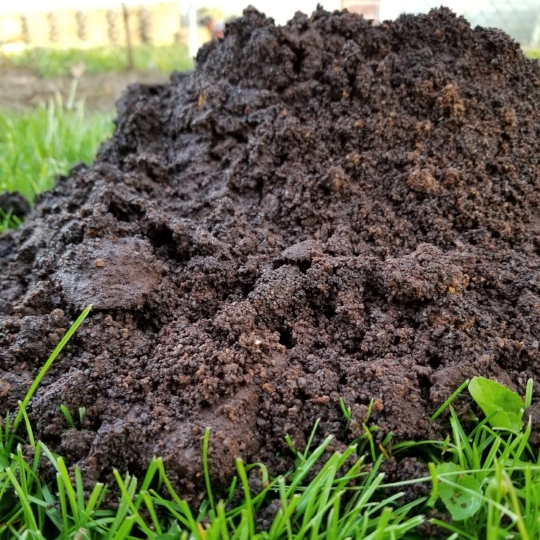Alternative Soil Fertility
I’ve been preparing for a presentation titled Unusual Edible Perennials and How to Use Them for Soil Health. Already, I have a problem with the title because I dislike using the term soil health. I would rather it be the title of this post. However, I realize it is not as pleasant sounding. It seems as if a large part of what I end up focusing on revolves around making things sound good to get likes, clicks, and follows. I will be the first to admit if you look at my social media, well, let’s say I might not be as social as I should be if those are my goals. I have come along way from posting about the tattoo on my foot though. I have also stated that those are not the reasons why I'm doing all of this either. It is just the nature of the beast I guess.
What preparing for this particular presentation has made me think about is
How I as an agronomist view -how and what farmers use to manage soil fertility. I know the obvious – cover crops, fertilizers, manures, and management. But, does it have to stop there?
What if you grew an alternative crop that had multiple markets, could be used to do what cover crops do and provided a sustainable source of soil fertility? That seems like money in the bank to me.
I will insert all my disclaimers now. I realize the ideas I’m talking about aren’t necessarily new, however, far too often we get in our set ways and don’t look beyond what we’re currently doing. I realize that most of what I’m suggesting is anecdotal at best. I also understand the scale at which these crops could be grown successfully will vary. Last, but maybe the most important, incorporating them comes with financial implications. However, in this era of agriculture, it seems to me that markets are opening up to be more receptive if not on the cusp of demanding we make some radical changes to our approach. Our approach to crop choices, fertilizer choices, and management choices.
In doing research, I’ve come to realize there is not a lot I could find about the subject. I found the typical article about favorite cover crops, what soil needs to be fertile, and what one can do to promote soil health. Beyond that standard research and information and looking at actually using plants to target soil fertility, information gets pretty obscure.
One article I came across was titled, Maximizing Soil Fertility with Soil Improving Plants.
https://www.regenerative.com/magazine/maximizing-soil-fertility-soil-improving-plants
I finally felt like I was on to something, and maybe I am, but I still want to take the subject further. Again, what if you grew an alternative crop that had multiple markets, could be used to do what cover crops do and provided a sustainable source of soil fertility?
What if we looked at using specific plants to go beyond cover cropping and used them to help meet even more specific soil fertility needs?
Even my husband who proclaims he has no idea even on an average day what I’m talking about when he reads my stuff, let me know I am pretty much-smoking something if I think farmers are going to be able to incorporate alternative crops successfully. But, why not start and look at things through a different lens if only for one presentation.
Next, I thought I should look at the primary reasons farmers use cover crops. What are the significant factors leading to the choice of cover crop and how could an alternative crop meet those reasons.
Most farmers choose cover crops based on the following-
1. Reduce fertilizer costs, mainly nitrogen
2. Reduce herbicide and pesticide use
3. Prevent soil erosion
4. Increase overall soil tilth
When planning my talk, I took those reasons and few others into consideration based on the crowd I’m going to speak to and the typical scale of the grower I work with.
I also took into consideration-
1. The fact I grow each one in my garden - hence the scale
2. They are edible in some form - multiple markets
3. They are all relatively easy to grow – ease of management
4. They are relatively common – attainability
5. If it could address at least one fertility need – a movement towards sustainability
So, the five plants or “crops” that I included are borage, comfrey, stinging nettle, Jerusalem artichoke, and rhubarb.
Borage-
It’s growth characteristics lend it to being a natural addition to add to any market garden.
It... tends to spread if happy
and does not like to be in wet soil,
but it
can tolerate some shade, and
self-seeds
What are the fertility benefits?
It... is a functional companion plant for strawberries, squash, and legumes.
and is said to be a sacrifice plant for tomatoes from hornworms.
But, what I’m most interested in is the fact it contains B vitamins and trace minerals.
Research has been done regarding the role B vitamins play in metabolic pathways and how it helps to make biochemical reactions in plants easier in regards to environmental stresses. Take a look at some work being done at the University of Florida at the following link
https://researchfeatures.com/2017/08/08/control-metabolism-changing-conditions/amp/
The part about containing trace minerals interests me because most soils lack them and often overlooked. However, trace minerals can be a limiting factor in soil fertility that can mean the difference in yield loss and more noticeably crop quality. For some growers, trace minerals can be expensive and harder to apply at appropriate levels without doing more harm than good. Using a plant to supply that need could, in fact, be a viable option while having several other benefits as well.












